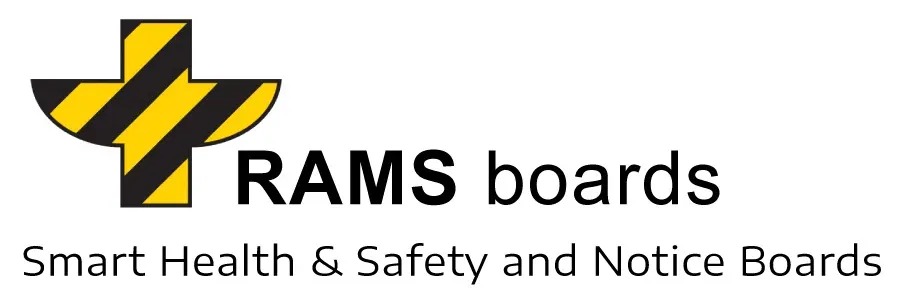Creating a health and safety notice board for your workplace involves a series of steps and requires certain materials and tools. The process and design can vary depending on the skills of the carpenter and the specifications provided by managers. Below, we outline a method to build a health and safety notice board from ply and timber, specifically for a building site, with a similar size to the internal display area of a RAMS board (1.5 m x 1.0 m).
Materials Needed:
- 2 sheets of Smooth Hardwood Plywood Board (L)2.44m (W)1.22m (T)12mm
- 3 x 3m long 2×4 timber
- 1 x 750ml Tin of Wood Primer
- 1 x 1ltr Tin of High Gloss Paint
- 1 x Box of 100 Screws 7.5 mm x 82 mm
- 2 x 2” paint Brushes
Tools Required:
- Circular saw
- Compact drill
Steps to Build the Notice Board:
- Cutting the Plywood: Using a circular saw, cut one sheet of ply to the dimensions of 1.5 m x 1.0 m. This will be the main display area of the board. From the remaining plywood, cut two side parts (approximately 300 mm each) and a bottom element. Use the second sheet of ply to cut a piece for the top roof protection.
- Constructing the Supports: The 2×4 timbers will serve as supports. Cut the 3m lengths of 2×4 into 2m sections for the vertical support. Use the remaining 1m pieces as bottom horizontal “feet”. Additionally, cut the third length of 2×4 into four braces to support the bottom horizontal feet.
- Assembling the Board: Assemble all the cut pieces using screws or nails to create the final shape of the notice board. Ensure that the structure is sturdy, and the display area is securely attached to the supports.
- Painting: Once assembled, the board needs to be painted with a primer and a finish coat. This helps extend the usability of the board by protecting it from weather elements.
Labour and Time Considerations:
- The construction process takes approximately half a shift for a skilled carpenter and one full shift for a labourer.
- The labourer assists the carpenter in preparation and assembly, and in the second part of the shift, applies two coats of paint.
Durability and Maintenance:
- Based on experience, a ply and timber board lasts about six months in open weather conditions before starting to deteriorate.
- After six months, the board often requires maintenance and repainting. If the ply is rotten or split, the board may need to be replaced entirely.
Efficiency and Cost Considerations:
- It`s important to consider the material costs, labour time, and the frequency of maintenance and replacement.
- As a cost and time-efficient alternative, it may be worth exploring other options, such as pre-made boards available in the market, which could offer longer durability and less frequent maintenance needs.
In summary, building a health and safety notice board requires careful planning, appropriate materials, and skilled labour. While a handmade ply and timber board is a feasible option, considering pre-made alternatives like RAMS boards might offer more efficiency and longevity, especially in harsh weather conditions typical of construction sites.
